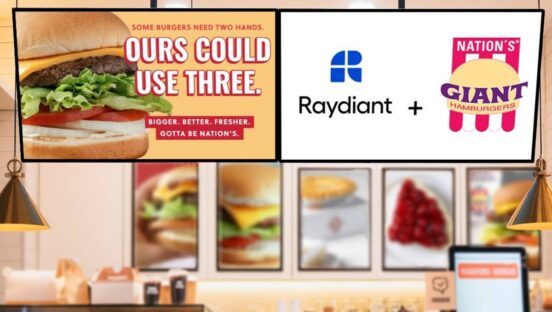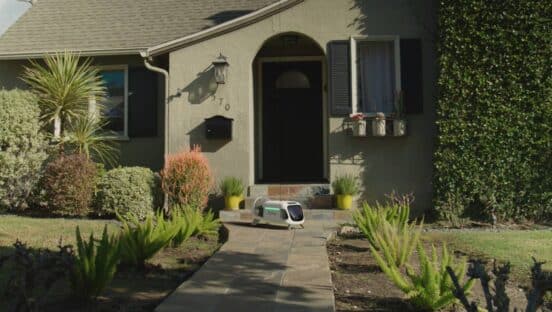As more and more Americans are vaccinated, the country is emerging from the COVID-19 lockdowns of the last year. For quick-service restaurants, the public’s shift to digital dining has been a boon. With the perceived safety of takeout and delivery services over in-restaurant dining, this sector weathered the pandemic well.
According to market researcher NPD Group, by the end of 2020 drive-thru lanes accounted for 44 percent of off-premises orders across the entire restaurant industry. Brands that had established drive-through capabilities saw orders boom. NPD Group also reported that “quick service restaurant chains, many of which had well-developed off-premises services, like drive-thru and carry-out prior to the pandemic, have fared better than full service restaurants this past year.”
Restaurants can thank COVID-19 for the rise in popularity of the online order and delivery channel. In 2020, U.S. online food delivery revenues reached $26.5 billion. And with more and more guests turning to third-party delivery services, the segment has gone from being a secondary revenue stream to major business for many restaurants.
What can quick-service brands do to support this shift to digital dining? For starters, they can double down on ensuring the safety of food delivered through digital channels—whether that’s drive-through, curbside, their own delivery or third-party delivery services.
What could go wrong with your delivery?
The best restaurants are committed to maintaining food safety across all customer channels. In order to have safer processes and protocols, they are permanently on the lookout for things that could go wrong.
Temperature Control helps maintain proper hot and cold temperatures for orders. This means keeping orders hot from the time they leave the oven until they arrive in the customer’s hands. To achieve a consistent temperature, the order must remain heated while waiting to be picked up and throughout the delivery journey.
Tampering: Instead of an order sitting on the driver’s front seat where it can be snacked, each order needs a tamper-proof package that ensures a driver can’t pilfer the French fries or take a bite from a burger. Precautions might include sealing the order with an adhesive label or carryout containers with one-time plastics seals that have to be broken to access the food.
Food Quality: How do restaurants keep crispy items crispy? The veggies from becoming soggy? Is that frosty milkshake packaged alongside the hot and fresh burger? Smart brands have figured out how to use packaging to ensure that delivery items are just as fresh as those served up on their dining room tables.
Is your restaurant ready to transition to delivery?
Over the last year, quick-serves have doubled down on improving their delivery channels. Some have optimized what was already there, dedicating kitchen staff to online orders or opening up additional lanes. For example, Chipotle, which had previously relied on in-store ordering and pick up, has added “Chipotlanes” for dedicated drive-thru service.
But quick-service brands also should have systems in place to ensure that the food in their digital channel is hot, crispy and delicious for the customer to eat, whether their order is delivered to a restaurant table or to their front door. Technologies such as digital checklists, remote temperature monitoring and automated food testing can help restaurants streamline their operations across all channels.
Digital checklists are gaining traction among restaurant managers as a way of codifying operations—from opening and closing functions to delivery reception and inventory maintenance. It only makes sense that checklists be expanded to track how online orders are received, prepared, packaged, and then sent out for delivery.
Checklists can include functions for delivery drivers that even include how food is passed over to the customer. For example, Domino’s Pizza has implemented a workflow that ensures food safety for online orders. Employees regularly sanitize restaurant surfaces and wash their hands. Using a pizza peel, cooks remove pizzas from a 450ºF oven, then slide the hot pizza into a pizza box, which then goes into an insulated delivery bag.
Customers who elect Domino’s contactless delivery option can specify in their online order where they want their pizza placed. The driver calls when the pizza arrives and places it on the designated surface using a second pizza pedestal. This eliminates the need to touch an order from the time a pizza goes into the oven to when it is placed on the customer’s doorstep.
Domino’s also offers a “carside delivery” contactless carryout option that customers can choose when placing a prepaid online order. Once the carside delivery option is selected, the customer adds their vehicle color, make, and model as well as where the pizza should be placed – the passenger side, back seat or trunk. When guests arrive at the restaurant, they hit an “I’m here” button, and a team member delivers their pizza to their car.
Shift Management includes compliance checks for pre-shift checklists, food waste tracking, shift notes, COVID-19 safety checklists, and delivery monitoring. Managers and team members can monitor compliance and completion rates through an online dashboard, mobile app, real-time alerts, and automated daily emails. This gives remote workers such as delivery drivers access via the mobile app to a tool that tracks what route they are taking, their arrival at the delivery site, and the actual order delivery.
Temperature Monitoring Systems are another way that restaurants can ensure the quality of their delivery orders. Leveraging wireless temperature sensors, these systems automatically fill out restaurant temperature logs, then send that data to tablets for team members to review and send to headquarters for managerial records and analysis.
Should a temperature-sensitive location, such as a walk-in freezer, go down, the operations manager will receive text and email alerts to the possible risk for inventory loss. In fact, a good temperature monitoring system will pick up on temperature changes before they become an issue, so that problems can be corrected proactively before a catastrophic inventory loss.
By extending these systems to monitor orders as they pass through the online order and delivery process, restaurants add a new level of control over how orders are prepared and the quality of the food that the customer receives.
Derek Stangle is the Vice President, Marketing at Squadle, Inc., a technology company that enables multi-unit operators to simplify complex operations and streamline food safety.












